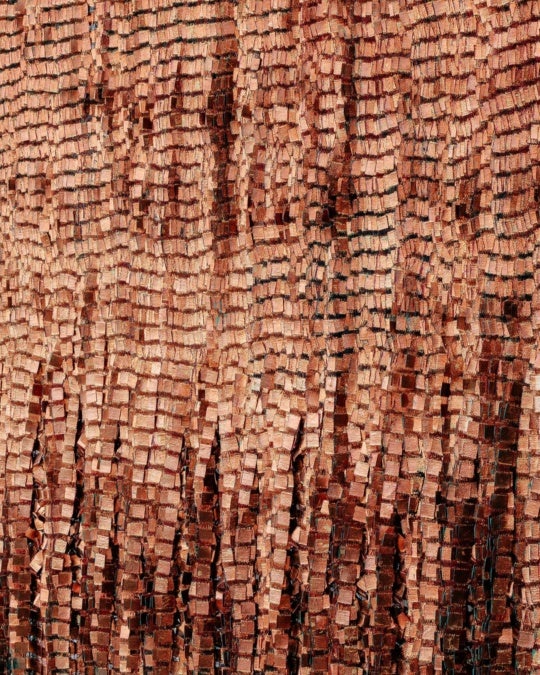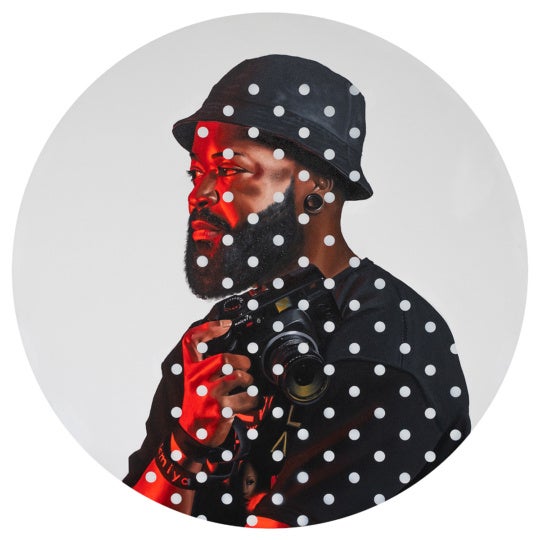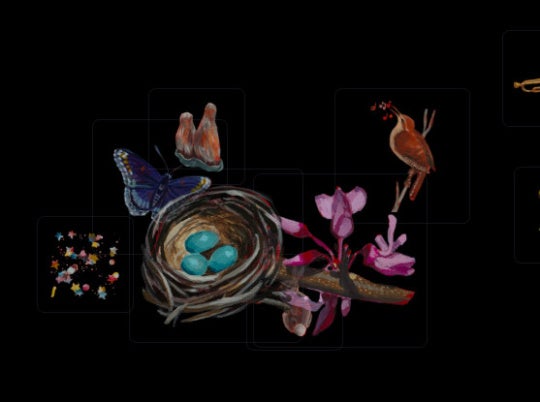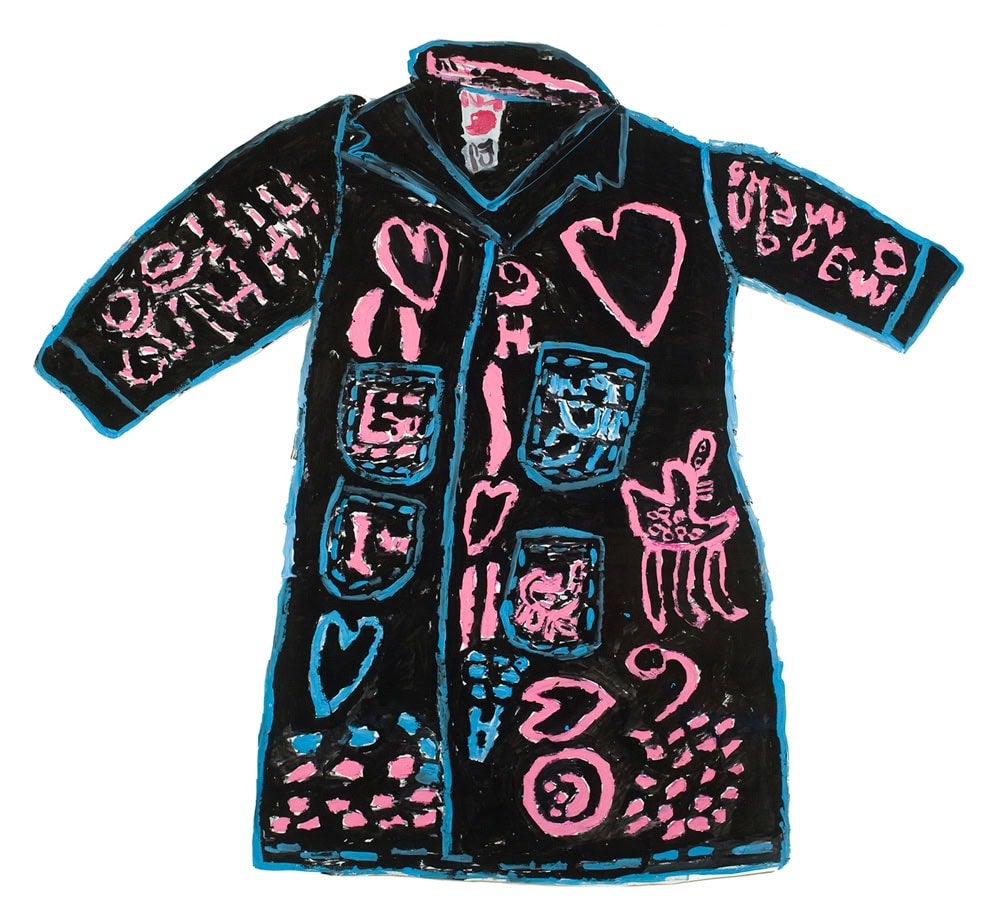
If you walk along East Broadway in New York City, past games of handball, a garbage truck beeping, and a man selling sliced melon halves (two for five dollars!) you will find the quiet oasis that is Ode to Dolly at SHRINE gallery. The exquisite Laura Craig McNellis retrospective, organized in collaboration with Ricco/Maresca Gallery, offers an intimate glimpse into what the artist deems significant; a plate of fish, a lemon slice, an olive jacket dotted with flowers. Pulling from three distinct bodies of McNellis’ work, Ode to Dolly spans decades of her artistic career, and underscores her reverence for everyday objects. Her quiet compositions reveal the holiness of a ham hock, the sleekness of a silverfish, the ordinary made extraordinary with each loving brush stroke.
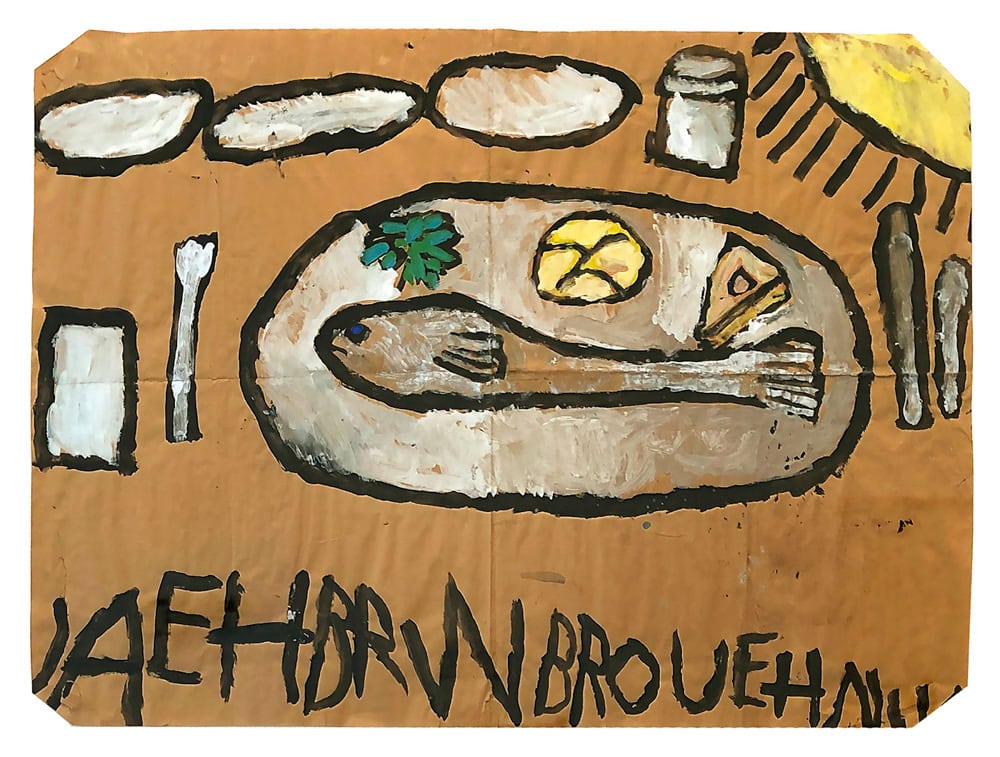
Born in 1957 in Nashville, Tennessee, McNellis was raised in a lofty three story house, occupied by her parents, grandfather, aunt and three sisters. During family meals, McNellis sequestered herself in the adjacent dining room, preferring to eat in quiet solitude. Each night after finishing her dinner, she adjourned to her bedroom to paint, working well into the night. Her earliest works were tender tempera paintings of the food she ate and the house she lived in. From as young as the age of seven, she worked solely on misprinted newspaper her father brought home from his job at the post office. Night after night, McNellis documented the world she saw, dappling the walls and curtains surrounding her desk with paint as she worked. Five works from this early series are on view in the gallery. In Untitled (Dinner Plate), a bright pink piece of meat sits on a plate, accompanied by three peas, a fried egg, and a pile of corn. The plate floats in space, grounded only by her signature sun in the right hand corner and a single row of clouds above it.
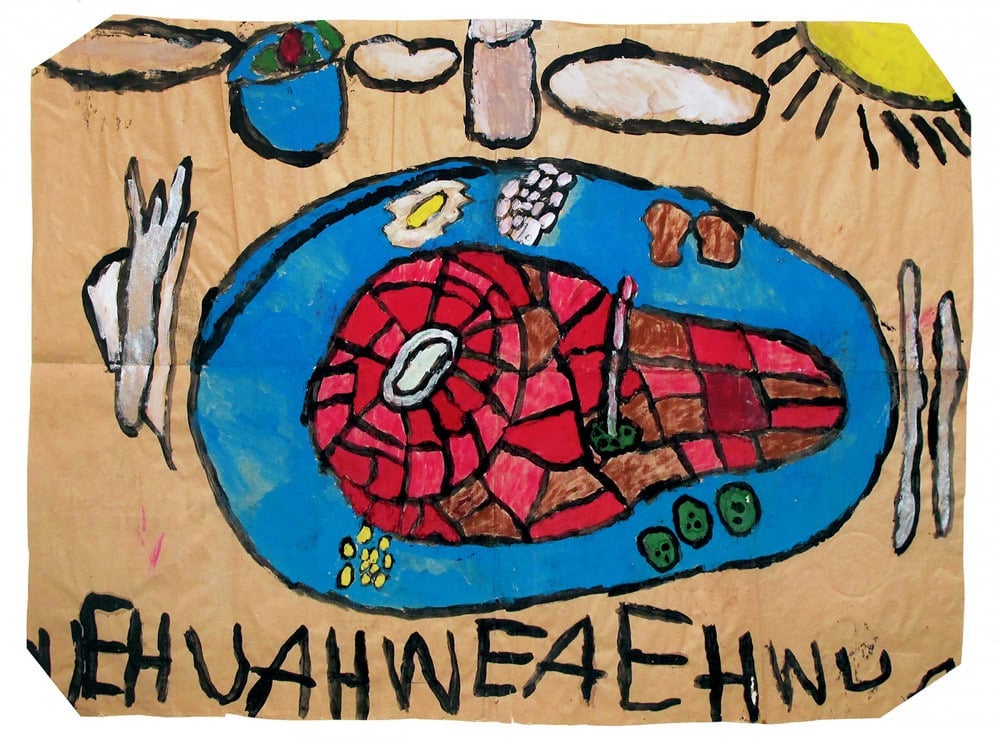
Letters line the bottom of these works. Non-traditionally verbal, McNellis communicates with sounds and single words, only decipherable by those closest to her. The letters “H”, “E” (sometimes drawn backwards) “W” and “M” appear most often. In no particular order, the meaning of the text is reimagined, becoming part of McNellis’ visual language. The newspaper, devoid of the news, is now re-envisioned by McNellis with her own story.
McNellis’ hand is loose but deliberate. As the director of SHRINE, Scott Ogden explains, “One of the things I love most about McNellis’ work is the push and pull between the completely raw painterly expression exhibited in all of her works that is countered with a very defined idea of what she is making. Her images hover slightly towards abstraction, but are pulled back to representation with black lines or scissor-cuts defining the objects.”
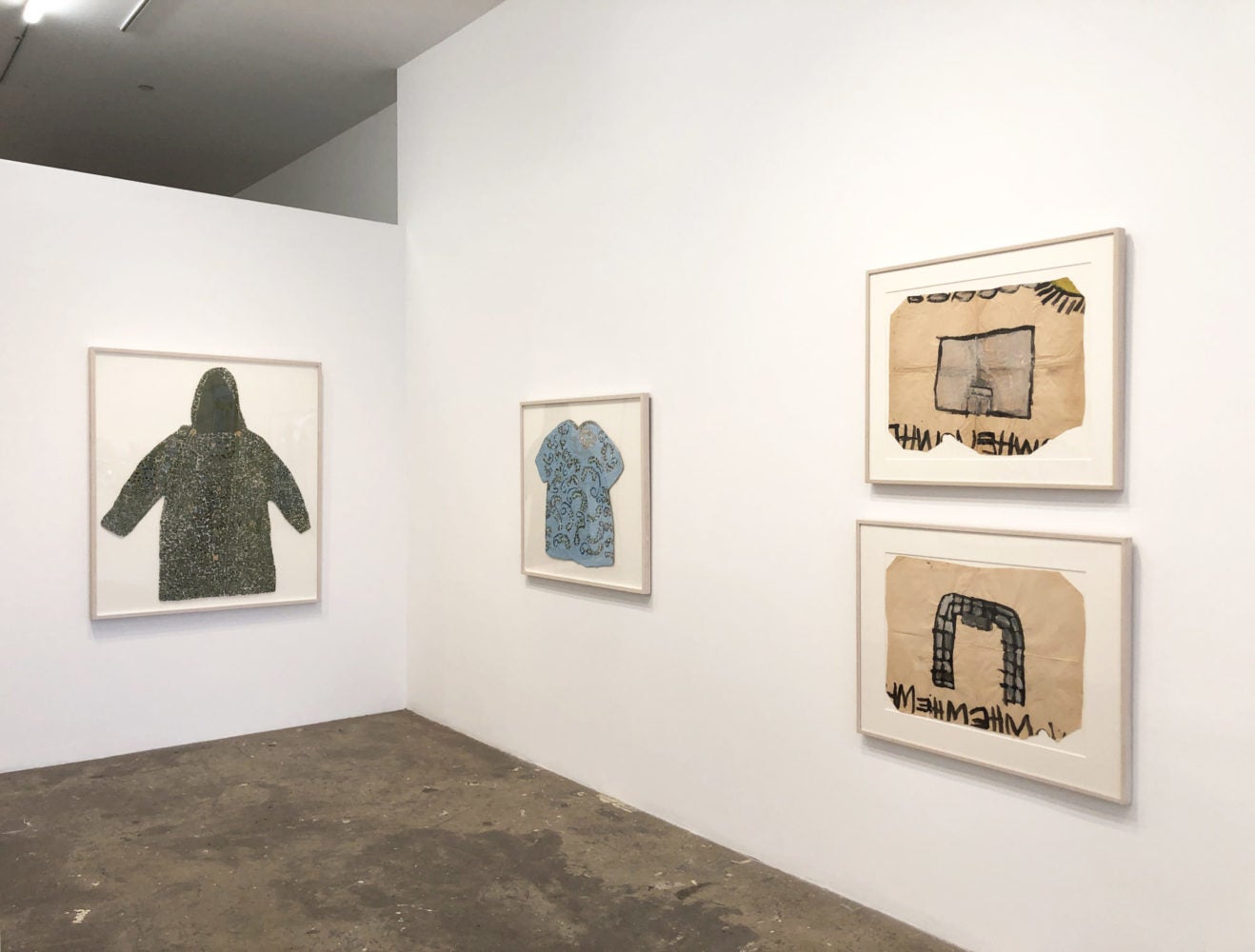
The ritual behind McNellis’ process feels critically apparent in these pieces. Once folded into small rectangles to fit inside her father’s work satchel, McNellis unfolded each paper she worked on before drawing her subject matter. She then traced over these outlines with tempera. When the painting was completed, she took a pair of scissors to the work, ritualistically chopping off all four corners and sides (her sister, Pat McNellis, suspects she was mimicking the gestures of her mother slicing the corners off of her bread). McNellis then systematically folded the work back into its original shape, regardless of whether the paint was dry. Some pages stuck together as a casualty of this process. Many years later, after being unfolded, archived and mounted, the creases still remain.
Following the illness and eventual death of her parents in 1998 and 1999, McNellis took a fifteen year hiatus from painting. During this break, she spent her days fastidiously sewing garments for her childhood doll and companion, Dolly. In 2000, her sisters moved her from her childhood home to Studio XI, a supported group home for creative people with intellectual disabilities. It was not until 2012, after a trip to buy a new bathing suit with her sisters, did she again take paintbrush to paper. On large white paper provided by Studio XI, McNellis rendered the blue flowered bathing suit, cutting it out from the background entirely. From then on, she painted mostly clothing.
As her work evolves, McNellis’ subject matter becomes more and more simplified, stripping the environments, or backgrounds away entirely. Her five arrestingly beautiful paintings of garments mark this third body of work. Each item of clothing is penned, painted and then snipped out. The cutouts are mounted to matboard, floating in complete isolation within the frame. Only the details of the sweater, the jacket, the coat are presented for the viewer. The lace trim of the collar in Untitled (Sweater with Collar) sings. So do the peach dots that grow slightly larger as they travel up the right side of the garment. Details like the sideways pink smiley face (bottom center) in Untitled (Black Coat with Pink and Blue) become hyper detectable.
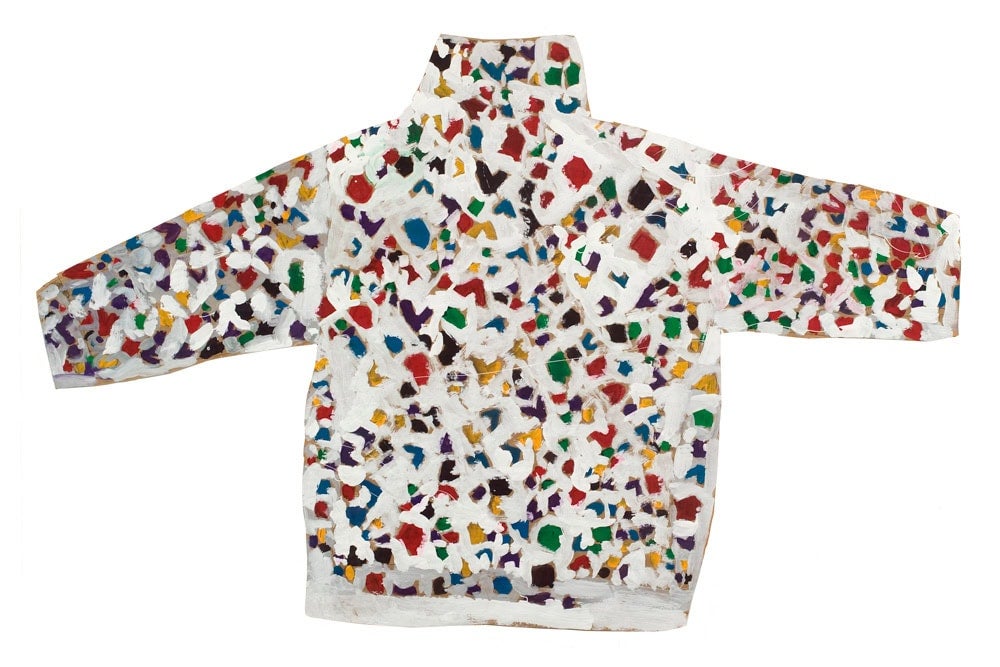
McNellis offers us a gift. Although she is not able to communicate in the traditional sense, in viewing her work, we are given the opportunity to witness her inner dialogue, devoid of clutter, stimuli, and noise. McNellis urges us to slow down and meditate on the beauty of a polkadot sweater. Sometimes it takes a person who experiences the world differently, to force us to see things in a new light. As Frank Maresca, director of Ricco/Maresca Gallery, who was first introduced to these works in 1990 explains, ”I looked at these images and they instantly grabbed me. I was astounded by the level of consistency and the level of surprise. I was looking at something I had never seen before.” In Ode to Dolly, we are faced with what McNellis sees, and what a beautiful world it is to behold.

